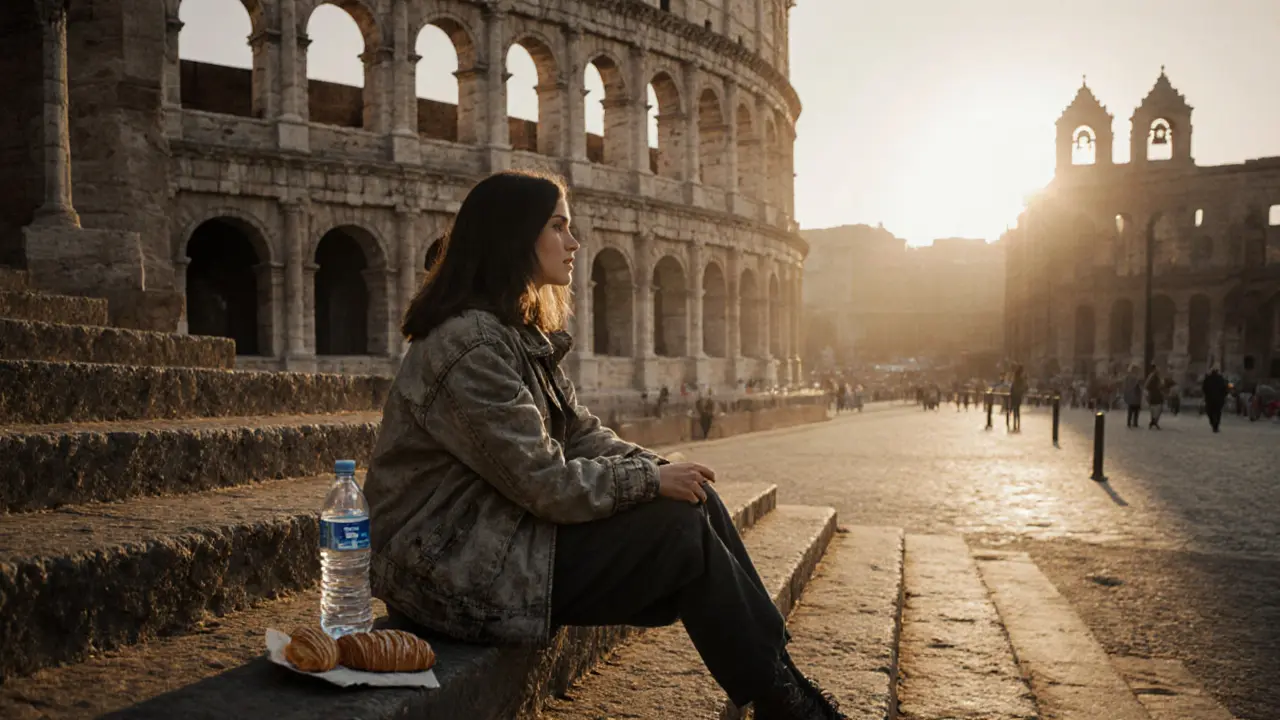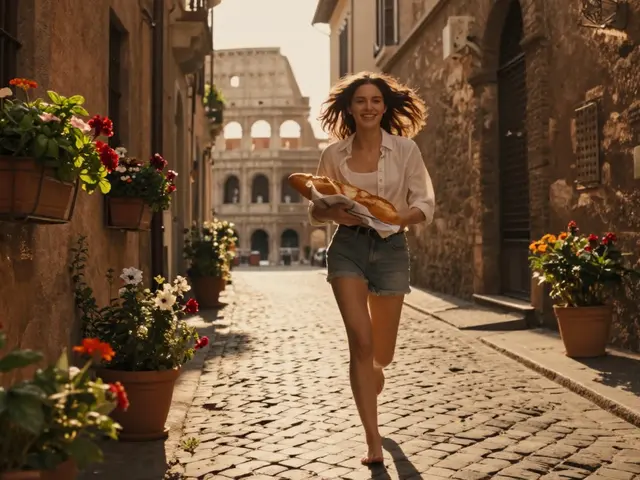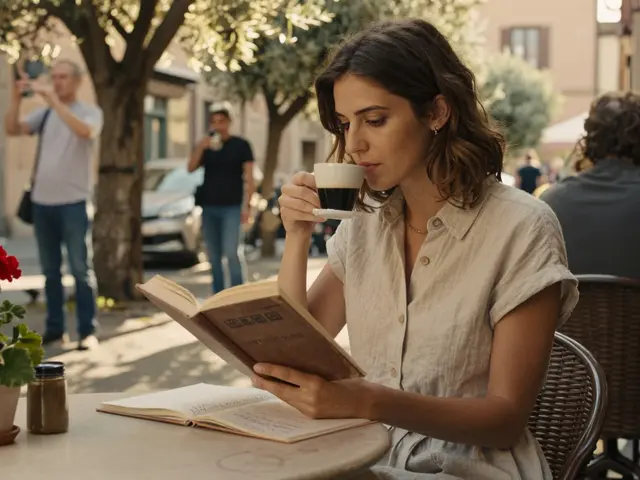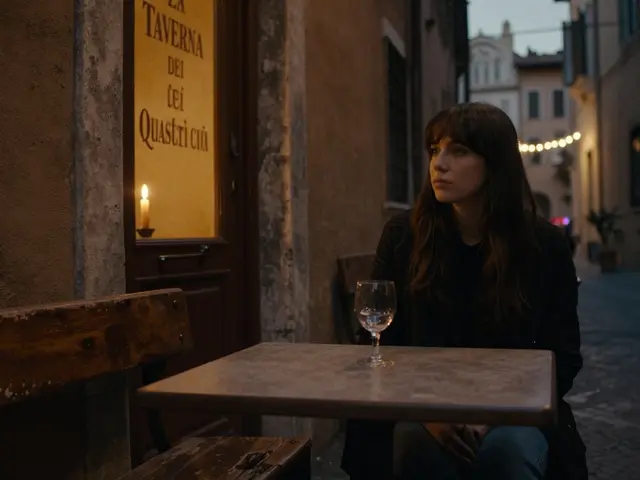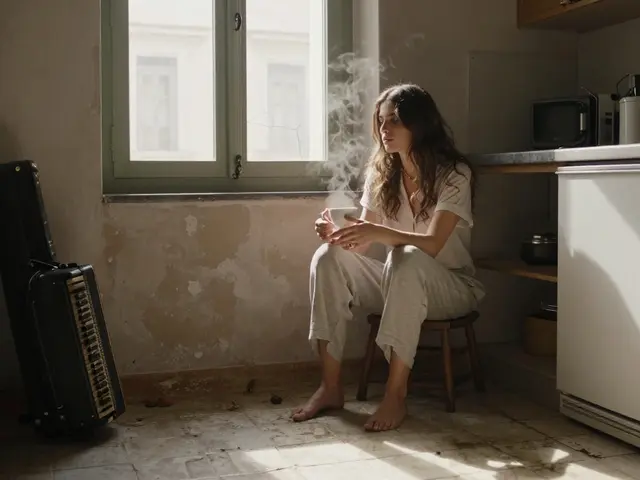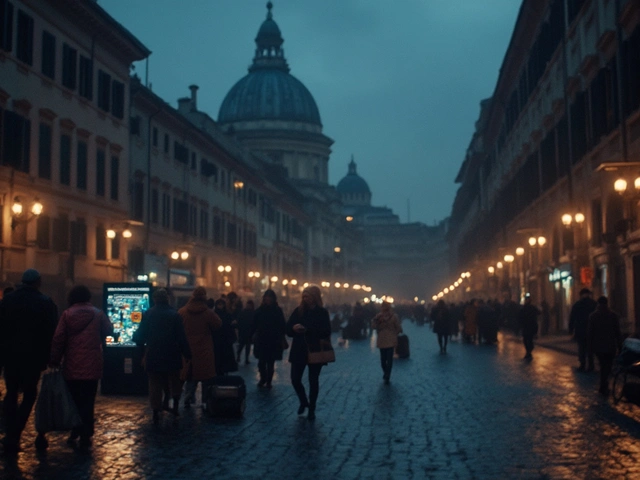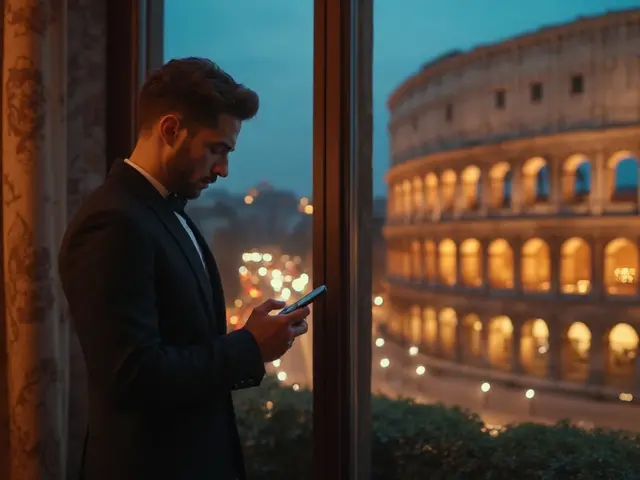Rome isn’t just ruins and espresso. For Lisa Ann, it’s where she learned to slow down, where the cobblestones told stories louder than any guidebook, and where the light at sunset turned the Colosseum into something sacred. She didn’t come to Rome to be seen. She came to disappear-and found herself instead.
First Steps in Trastevere
She arrived in late September, just after the summer crowds thinned. Her suitcase held three outfits, a notebook, and a single photo of her grandmother standing in front of the Pantheon in 1972. That photo was her only itinerary. She walked into Trastevere without a map and let the scent of garlic and rosemary pull her down narrow alleys. No one knew who she was. No one cared. That was the point.
At a tiny osteria tucked behind Santa Maria in Trastevere, she ordered cacio e pepe. The chef, a man named Gianni with hands like cracked leather, asked if she wanted extra pepper. She said yes. He smiled like he’d heard that answer a thousand times. She sat there for two hours, watching locals argue over football, kiss each other on both cheeks, and laugh too loud. No one rushed her. No one asked for a selfie. For the first time in years, she felt invisible-and that felt like freedom.
The Colosseum at Dawn
She went to the Colosseum before sunrise. Not because she wanted to beat the crowds, but because she needed the silence. The guards knew her by then. One of them, a woman named Lucia, started leaving her a bottle of water and a warm cornetto every morning. "You’re the only one who comes here just to sit," Lucia said. Lisa Ann didn’t answer. She just nodded.
She sat on the steps where tourists usually snap photos and just listened. The city woke up slowly: a bell ringing from a nearby church, a bike bell ringing down the street, the distant clatter of a cart being pushed by an old man. She wrote in her notebook: "History doesn’t shout. It breathes. And if you’re quiet enough, it whispers back."
She didn’t climb the tiers. She didn’t buy a ticket to the underground. She didn’t need to. The real ruins weren’t the stones-they were the quiet moments between them.
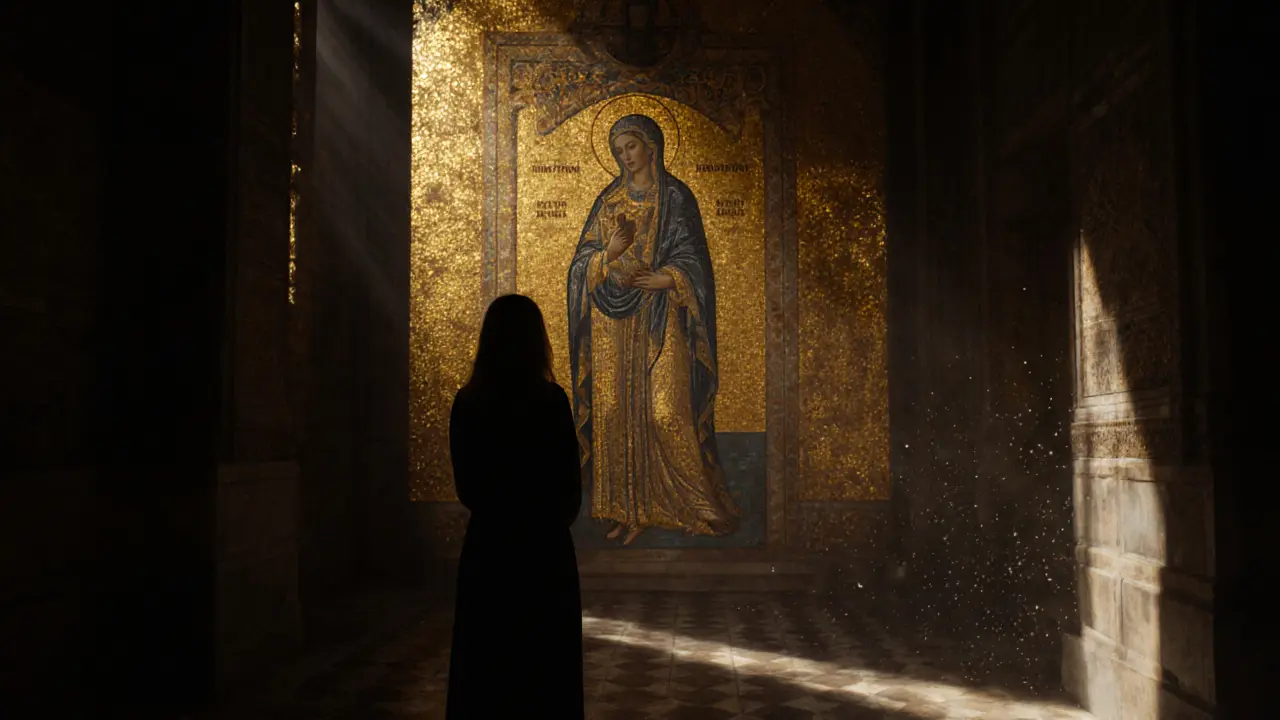
Hidden Chapels and Unspoken Faith
Rome has over 900 churches. Most tourists hit St. Peter’s and call it a day. Lisa Ann found the ones no one talks about. Santa Prassede. San Clemente. Sant’Agnese fuori le mura. Each one felt like a secret. In Santa Prassede, she stood in front of the 9th-century mosaics of Saint Agnes, their gold leaf still glowing after 1,200 years. No one else was there. She didn’t take a photo. She just let the light hit her face.
She didn’t pray. But she felt something. Not religion. Not awe. Something deeper. A sense that people had come here for centuries-broken, hopeful, lost-and left a little piece of themselves behind. She wondered if she’d left something too.
Food That Doesn’t Care About Your Name
She ate in places that didn’t have menus in English. In Testaccio, she ate trippa alla romana at a stall run by a woman named Rosa who didn’t speak a word of English. Lisa Ann pointed at what Rosa was eating. Rosa handed her a bowl, then slapped her hand playfully when she tried to pay too much. "Mangia," Rosa said. Eat.
In Monti, she tried carciofi alla giudia-fried artichokes so crisp they shattered like glass. She ate them with her fingers. No fork. No napkin. A man at the next table grinned and handed her a glass of wine without saying a word. She didn’t know his name. She never saw him again. But she still remembers the taste.
Rome doesn’t care if you’re famous. It only cares if you’re hungry.
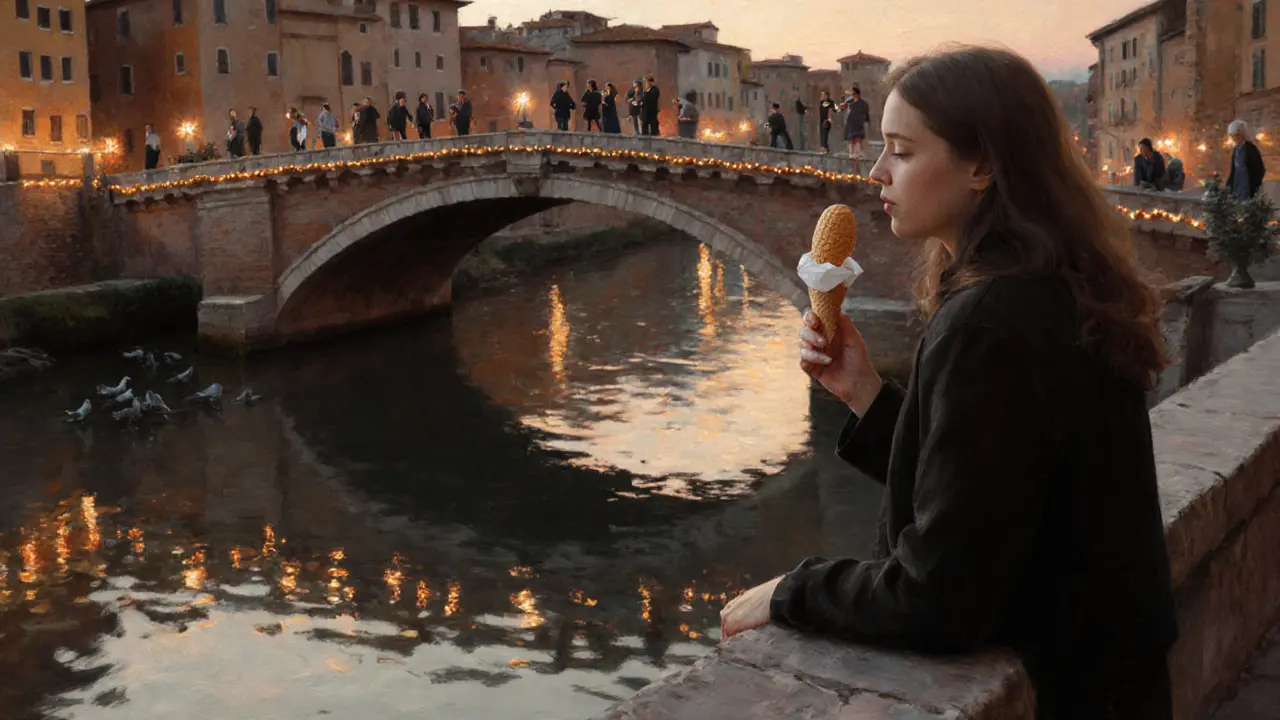
The River and the Reflection
She spent her last evening walking along the Tiber. The bridges were lit, the water dark and slow. She sat on the edge near Ponte Sisto and watched the reflection of the city ripple with every passing boat. A group of students passed by, singing off-key. An old couple walked hand in hand, stopping to feed pigeons. A street musician played a song she didn’t recognize but felt like home.
She thought about her life before Rome. The noise. The pressure. The cameras. The scripts. The need to be someone else every day.
Here, she was just a woman in a worn-out jacket, eating gelato from a paper cone, watching the light change. No one asked her to perform. No one expected her to be anything but present.
What Rome Gave Her
She didn’t leave Rome with souvenirs. She left with silence. With the memory of a stranger’s laugh. With the taste of pepper on her tongue. With the quiet understanding that beauty doesn’t need an audience.
When she got back to her apartment in Los Angeles, she didn’t post a single photo. She didn’t write a blog. She didn’t do interviews. She just sat by her window and listened to the sound of rain. For the first time in a long time, she didn’t feel like she had to explain herself.
Rome didn’t change her. It reminded her who she was before the spotlight.
Who is Lisa Ann?
Lisa Ann is a former adult film performer who transitioned into a quieter, more personal life after leaving the industry. She’s known for her candid reflections on identity, solitude, and finding peace outside the public eye. Her journey to Rome was documented in private journals and later shared in interviews as a story of healing-not fame.
Did Lisa Ann work as an escort in Rome?
No, Lisa Ann did not work as an escort in Rome. While she has been associated with the adult entertainment industry, her time in Rome was entirely personal. She traveled alone, stayed in small guesthouses, and avoided any professional engagements. Her story is about rest, not work.
Is this a travel guide to Rome?
Not in the traditional sense. This isn’t a list of top attractions or hotel recommendations. It’s a portrait of how one person experienced Rome-not as a tourist, but as someone seeking stillness. The places mentioned are real, but the value lies in the perspective, not the itinerary.
Why did Lisa Ann choose Rome over other cities?
Rome offered her anonymity, history without pressure, and a rhythm that didn’t demand performance. Unlike Paris or London, Rome doesn’t force you to be part of its story. You can simply sit, observe, and be. For someone tired of being watched, that was everything.
Can I follow Lisa Ann’s exact route in Rome?
You can visit the same places-Trastevere, the Colosseum at dawn, Santa Prassede, Ponte Sisto-but you won’t find her footsteps. She didn’t leave markers. Her journey wasn’t about the destination. It was about the space between thoughts. The best way to follow her path is to go quietly, without expectations, and let the city surprise you.
There are thousands of ways to see Rome. Lisa Ann chose the one that didn’t need a camera. Maybe that’s the most powerful way of all.

